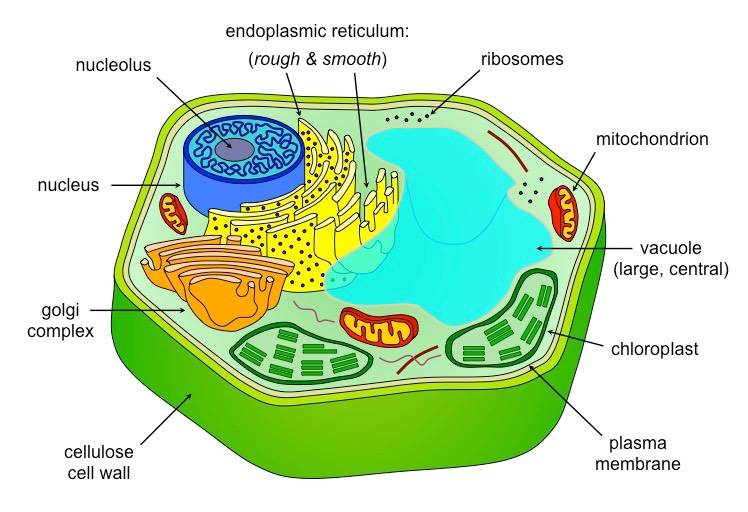![]()
Understanding:
• Eukaryotes have a compartmentalised cell structure
Eukaryotes are organisms whose cells contain a nucleus (‘eu’ = good / true ; ‘karyon’ = nucleus)
They have a more complex structure and are believed to have evolved from prokaryotic cells (via endosymbiosis)
Eukaryotic cells are compartmentalised by membrane-bound structures (organelles) that perform specific roles
Eukaryotes can be divided into four distinct kingdoms:
- Protista – unicellular organisms; or multicellular organisms without specialised tissue
- Fungi – have a cell wall made of chitin and obtain nutrition via heterotrophic absorption
- Plantae – have a cell wall made of cellulose and obtain nutrition autotrophically (via photosynthesis)
- Animalia – no cell wall and obtain nutrition via heterotrophic ingestion
Typical Structure of an Animal Cell


⇒ Click on the diagram to show / hide labels
Typical Structure of a Plant Cell

